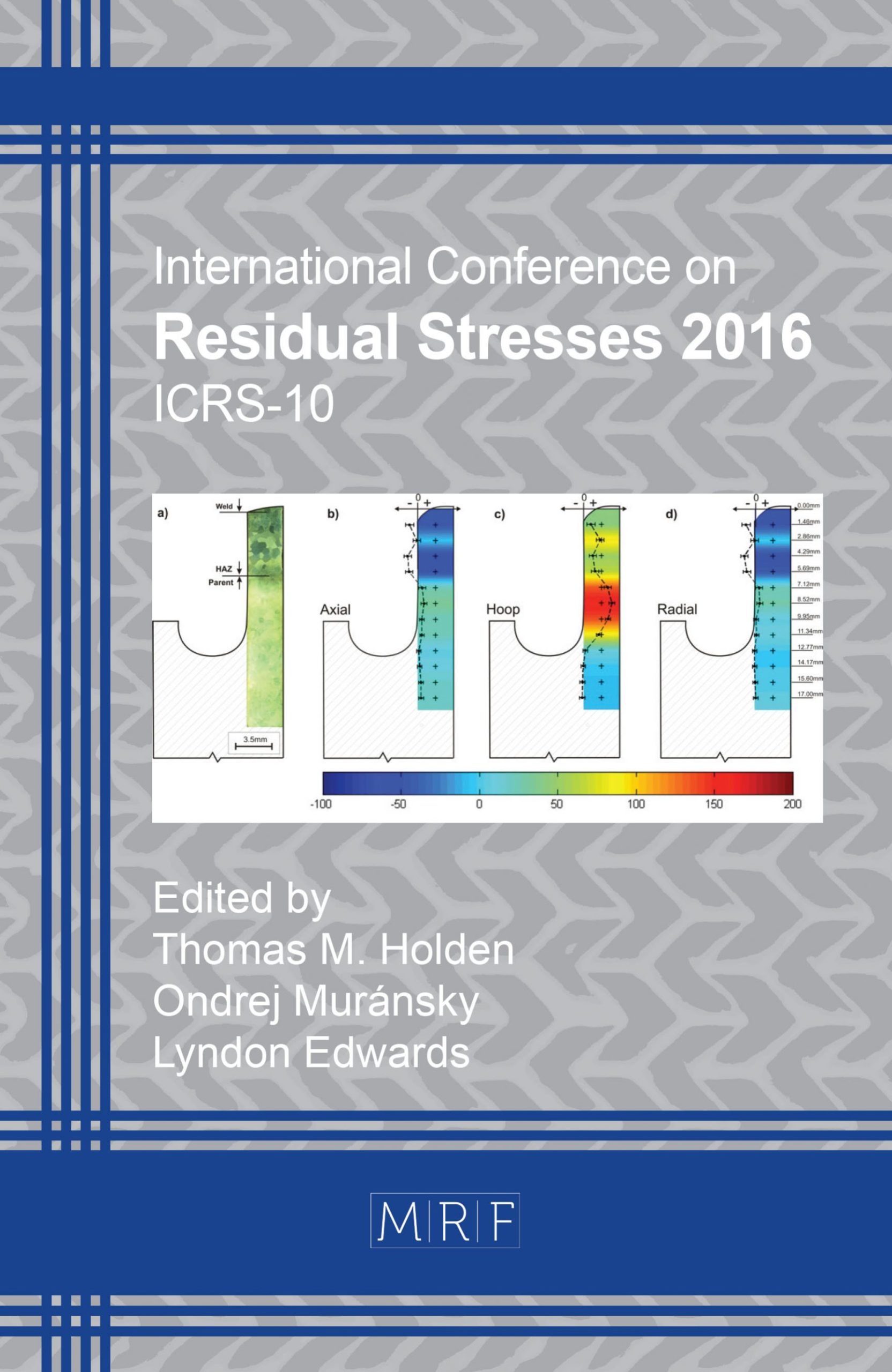Stress in Thin Wall Structures Made by Layer Additive Manufacturing
V. Luzin, N. Hoye
download PDFAbstract. Manufacturing of thin wall structures is one of the main applications of additive manufacturing, where it has significant advantages over traditional milling and machining techniques or welded analogues. Such thin walled structures are common in structural aerospace components, and are also frequently made from titanium alloys. For such large-scale components, layer deposition strategy is more advantageous rather than a pixel-wise deposition approach due to the demand for high productivity and size requirements. Several techniques can be used to produce layer-wise build-ups, including laser-powered Direct Metal Deposition (DMD) process or gas tungsten arc welding (GTAW). Although, in the general case of arbitrary thin wall structures the stress distribution is complex, for some simple geometries, the stress state is simple and can be well characterized within a model by a single parameter representing a layer deposition stress in the steady-state regime. The model calculations were verified by experimental results on a thin-walled sample component that was manufactured from Ti-6Al-4V by GTAW with the residual stresses measured using KOWARI neutron strain scanner at the OPAL research reactor (ANSTO).
Keywords
Residual Stress, Additive Manufacturing, Titanium
Published online 12/22/2016, 6 pages
Copyright © 2016 by the author(s)
Published under license by Materials Research Forum LLC., Millersville PA, USA
Citation: V. Luzin, N. Hoye, ‘Stress in Thin Wall Structures Made by Layer Additive Manufacturing’, Materials Research Proceedings, Vol. 2, pp 497-502, 2017
DOI: http://dx.doi.org/10.21741/9781945291173-84
The article was published as article 84 of the book Residual Stresses 2016
![]() Content from this work may be used under the terms of the Creative Commons Attribution 3.0 licence. Any further distribution of this work must maintain attribution to the author(s) and the title of the work, journal citation and DOI.
Content from this work may be used under the terms of the Creative Commons Attribution 3.0 licence. Any further distribution of this work must maintain attribution to the author(s) and the title of the work, journal citation and DOI.
References
[1] S. Seong, O. Younossi, B.W. Goldsmith, T. Lang, M. Neumann, Titanium: Industrial Base, Price Trends, and Technology Initiatives, RAND Project Air Force, 2009.
[2] J.P. Davim, Machining of Titanium Alloys, Springer Berlin Heidelberg, 2014. http://dx.doi.org/10.1007/978-3-662-43902-9
[3] B. Baufeld, O.V.d. Biest, R. Gault, Additive manufacturing of Ti–6Al–4V components by shaped metal deposition: Microstructure and mechanical properties, Mat. Des., 31, Supplement 1 (2010) S106-S111. http://dx.doi.org/10.1016/j.matdes.2009.11.032
[4] P.A. Colegrove, H.E. Coules, J. Fairman, F. Martina, T. Kashoob, H. Mamash, L.D. Cozzolino, Microstructure and residual stress improvement in wire and arc additively manufactured parts through high-pressure rolling, J. Mater. Process. Technol., 213 (2013) 1782-1791. http://dx.doi.org/10.1016/j.jmatprotec.2013.04.012
[5] J. Ding, P. Colegrove, J. Mehnen, S. Ganguly, P.M. Sequeira Almeida, F. Wang, S. Williams, Thermo-mechanical analysis of Wire and Arc Additive Layer Manufacturing process on large multi-layer parts, Computational Materials Science, 50 (2011) 3315-3322. http://dx.doi.org/10.1016/j.commatsci.2011.06.023
[6] B.A. Szost, S. Terzi, F. Martina, D. Boisselier, A. Prytuliak, T. Pirling, M. Hofmann, D.J. Jarvis, A comparative study of additive manufacturing techniques: Residual stress and microstructural analysis of CLAD and WAAM printed Ti–6Al–4V components, Mat. Des., 89 (2016) 559-567. http://dx.doi.org/10.1016/j.matdes.2015.09.115
[7] D. Ding, Z. Pan, D. Cuiuri, H. Li, A multi-bead overlapping model for robotic wire and arc additive manufacturing (WAAM), Robotics and Computer-Integrated Manufacturing, 31 (2015) 101-110. http://dx.doi.org/10.1016/j.rcim.2014.08.008
[8] D. Ding, C. Shen, Z. Pan, D. Cuiuri, H. Li, N. Larkin, S. van Duin, Towards an automated robotic arc-welding-based additive manufacturing system from CAD to finished part, Computer-Aided Design, 73 (2016) 66-75. http://dx.doi.org/10.1016/j.cad.2015.12.003
[9] N. Hoye, H. Li, D. Cuiuri, A. Paradowska, Measurement of residual stresses in titanium aerospace components formed via additive manufacturing, Mater. Sci. Forum, 777 (2014) 124-129.
[10] O. Kirstein, V. Luzin, U. Garbe, The Strain-Scanning Diffractometer Kowari, Neutron News, 20 (2009) 34-36.
[11] Y.C. Tsui, T.W. Clyne, An analytical model for predicting residual stresses in progressively deposited coatings .1. Planar geometry, Thin Solid Films, 306 (1997) 23-33. http://dx.doi.org/10.1016/S0040-6090(97)00199-5
[12] S. Timoshenko, J.M. Gere, Mechanics of materials, Van Nostrand Reinhold Co., 1972.































